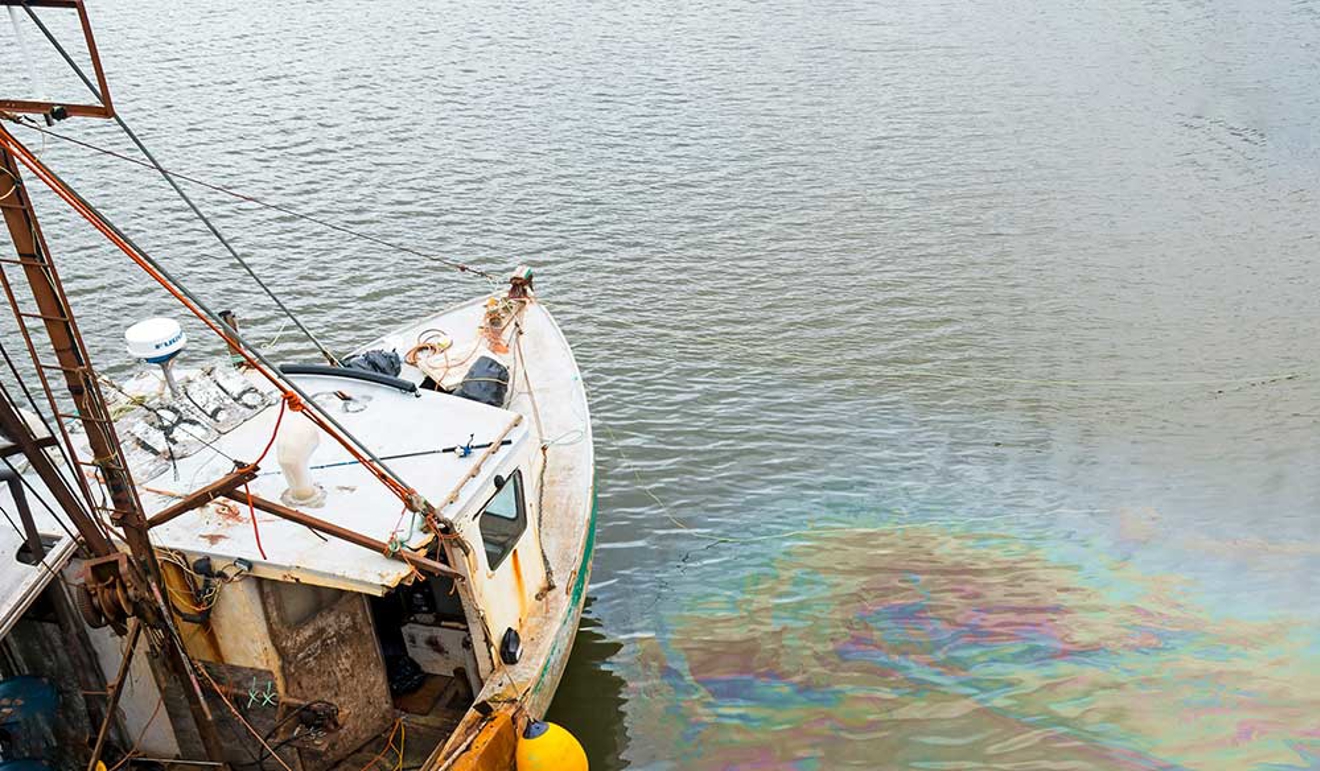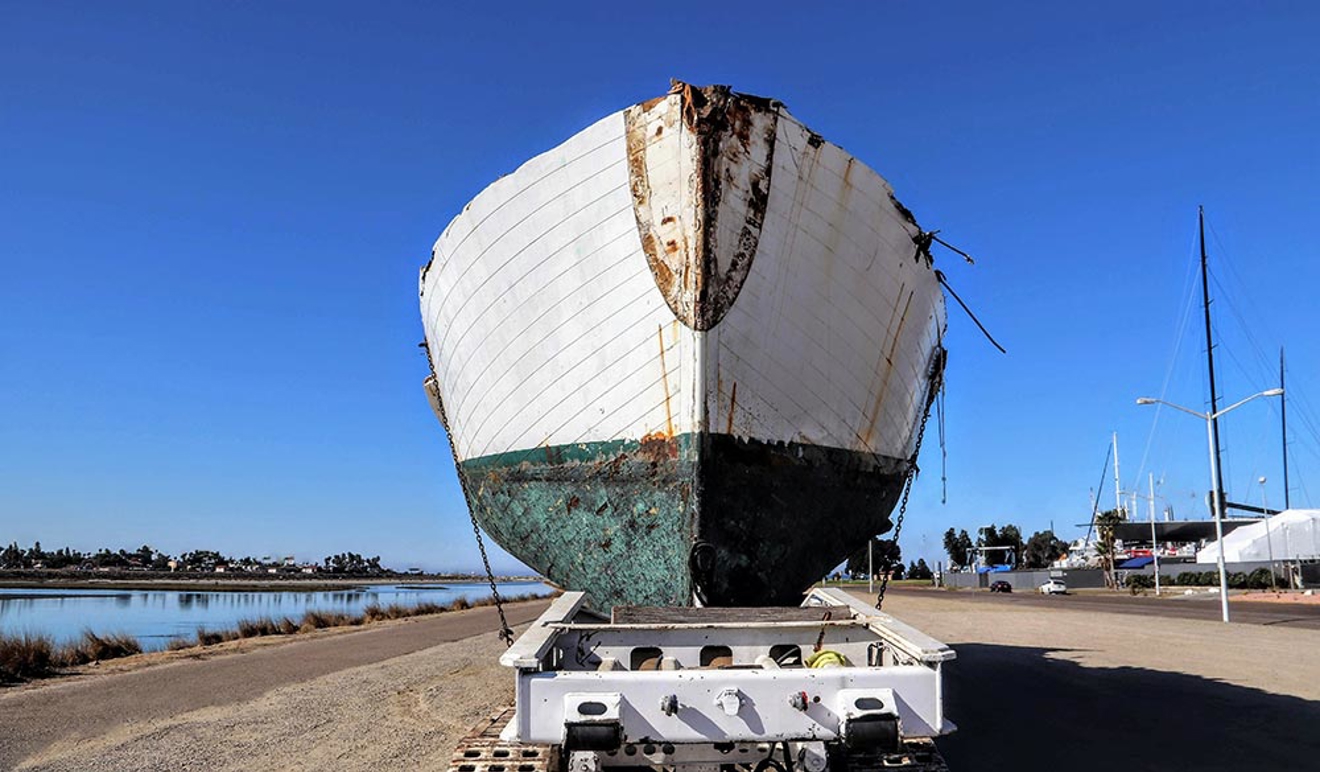End of life boats
What happens to boats made of an almost indestructible material when they reach the end of their useful lives?
The RYA looks at the difficulties of disposal and the changes needed to help recreational craft owners better protect the marine environment.
Many of us have seen abandoned boats in various states of decay, on and off the water. While most reports are anecdotal, they are environmentally damaging eyesores that appear to be on the increase.
Most small leisure craft built from the 1970s onwards were constructed from fibre reinforced plastic (FRP), most commonly of glass fibre, or GRP. The boats are highly durable, typically lasting 30–50 years in active use. Vessels using the material include sailing and power boats, but also those with a shorter life that will be scrapped much sooner, such as dinghies and other small craft.
As the boats become too expensive to maintain, end-of-life (EOL) disposal is becoming a major issue for boaters, the environment and, when abandoned, for marine life.
The number of boats involved is hard to know, given the wide range of types, ages, and patterns of use, but in 2018 British Marine estimated that there were over 1 million boats and watersports craft owned by UK households. Some sources say it’s closer to five million if all craft, such as paddle boards, are included.
Threats to ecosystems
Wood and steel hulls in old boats can be managed relatively easily through established recycling routes, as can other metal and wood components on a boat. This is not the case for FRP, which doesn’t easily decompose, though it does physically break down over time. Research undertaken at the University of Brighton has shown that boats made of FRP which are left in the water release microscopic fibres.
These particles enter the ecosystem when marine creatures ingest them, and these may then enter the human food chain. There’s also the damage caused by fuel, oil and chemicals from anti-fouling paint and upholstery leaking into the water.
The cheapest option in most cases is still to break down the hull and dispose of it in landfill, but this is a short-term solution that doesn’t follow ecological principles and some countries have already banned this practice. FRP can be recycled for use in construction products, burned in waste-to-energy power plants, or used along with fossil fuels to make cement. The latter two aren’t ecologically sound options either though, as most plastics are derived from fossil fuels so release CO2 when burnt.

Cost of disposal
A common question posed to the RYA is, ‘how can I get rid of my boat or my club’s boat for free?’ The simple answer is that you can’t, due to the high cost of disposal and the low value of the materials, particularly those in the hull.
Estimated average costs of properly controlled dismantling and handling of an unwanted boat range from a few hundred pounds for a dinghy to over £20,000 for a 15 metre-plus yacht. One of the most expensive elements is transportation, which can double the overall cost.
The adoption of additional solutions would start from 2030 in coordination with changes happening in similar industries. The boating industry is international, so any new EU Directives are likely to be adopted by major manufacturers. This represents a statement of intent by the boating industry to become sustainable with the materials it uses.
Projects in various countries have raised awareness of boat dismantling and recycling practices, but few have addressed how it should be paid for. To some it seems logical that the costs should fall on the final boat owner, but they're least likely to be able to afford it. The boatbuilding industry, and the makers of the raw materials, have their part to play with both the financing of proper disposal of the existing fleet, and the development of new products that can be more readily recycled as part of a 'circular economy'.
Most countries don't have an organised system for boat scrappage. France is an exception. As is common practice in other sectors, manufacturers selling recreational craft into the French market must contribute, at point of sale, to the costs of recycling and proper disposal. A network of companies operates dismantling sites, which encourage owners to properly deal with their EOL vessels. The system doesn't require boats to be registered, and deals with any boat, regardless of its provenance. In the UK, there's only a handful of organisations who deal with EOL small craft. Most are on the south coast, meaning higher transport costs for someone based elsewhere.
The Department for Environment, Food and Rural Affairs (Defra) is consulting on potential solutions. The RYA has advised Defra of how effective the French system is, without a requirement for boat registration. A roadmap published in March 2023 by the European Boating Industry, with input from the European Boating Association (EBA), included their commitment to phase out the dumping of boats in landfill and burning of FRP by 2030, and expanding the use of FRP in cement kilns from 2025. The RYA is responsible for the management of the EBA and guided their input.

The future
Recycling FRP for use in new boats is potentially an option and has proved successful with some other plastics as it creates a value for the material at end-of-life. In the UK a group of chemical companies, boat builders and harbour authorities claim to have a working method to extract the resins and the fibres from FRP. They launched the project at the Green Tech Boat Show in 2022 and are seeking funding to progress the work.
Regulations on the use of recycled content may be required to make this a reality. Raising awareness of EOL boats is just one way the RYA and The Green Blue are highlighting the impact recreational boaters can have on the environment and what we can all do to support marine conservation.
With boats continually reaching their end of life, abandoned boats appears to be a growing issue. To confirm this, the RYA is collecting data on abandoned boats from across the country - but we need your help.
Next time you spot an abandoned boat, report it to the RYA via The Green Blue. All data received will be a valuable indication of the scale of the problem.
